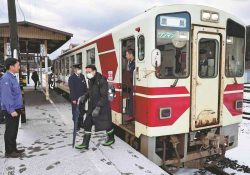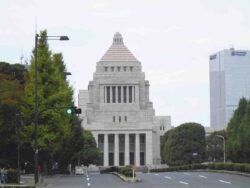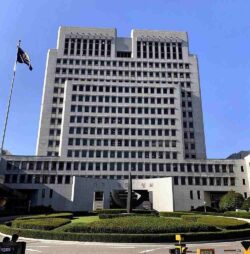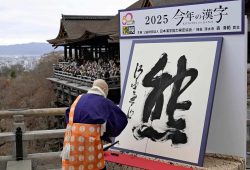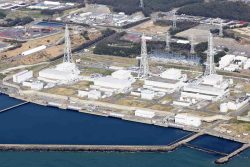JAL Plane Was Moving On Taxiway 2 Minutes Before Blast; Debris From WWII Shell Scattered Over 200-Meter Radius
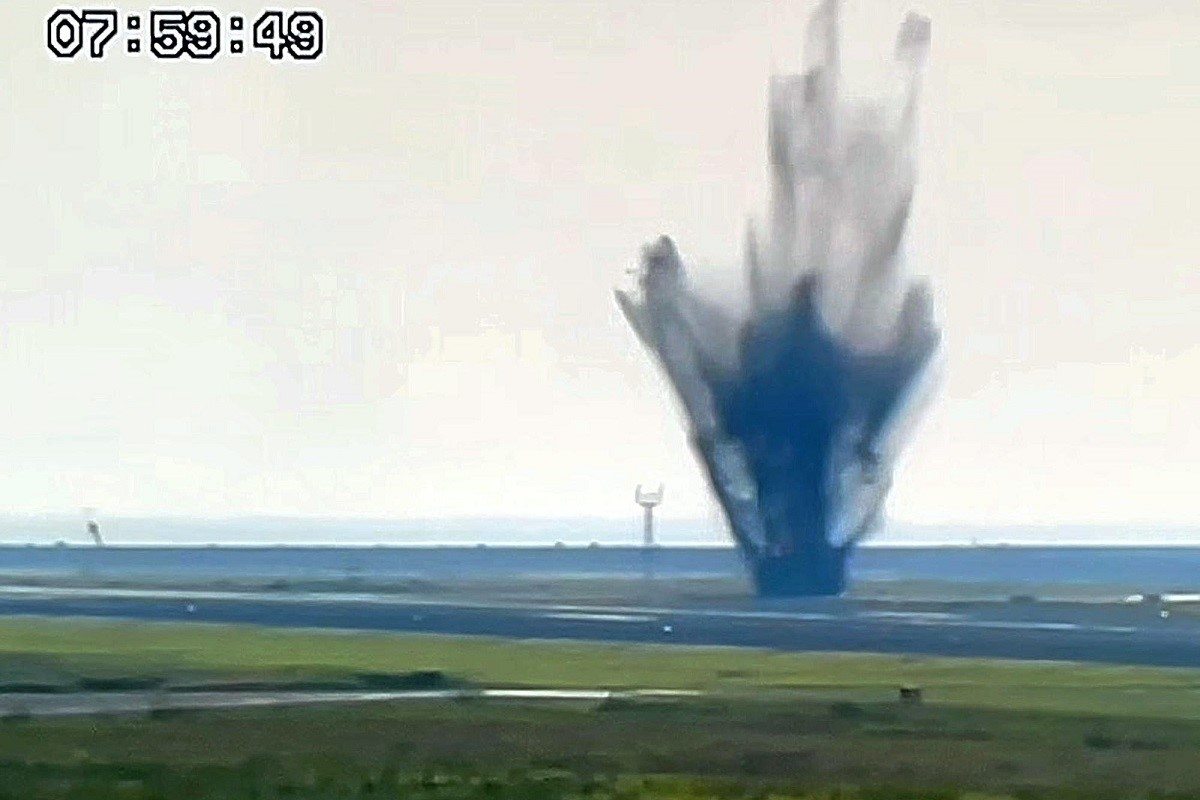
A cloud of dust is seen after a dud bomb explodes at Miyazaki Airport on Wednesday, in this image captured from video footage of the Civil Aviation College.
15:46 JST, October 3, 2024
A Japan Airlines plane was moving on Miyazaki Airport’s taxiway about two minutes before the Wednesday explosion of a dud shell, which is believed to have been dropped by the U.S. military during the Pacific War.
The explosion occurred at about 8 a.m. Wednesday on the S6 taxiway, which is connected to a runway at the airport. The runway was closed due to the hole caused by the blast, resulting in the cancellation of 87 flights.
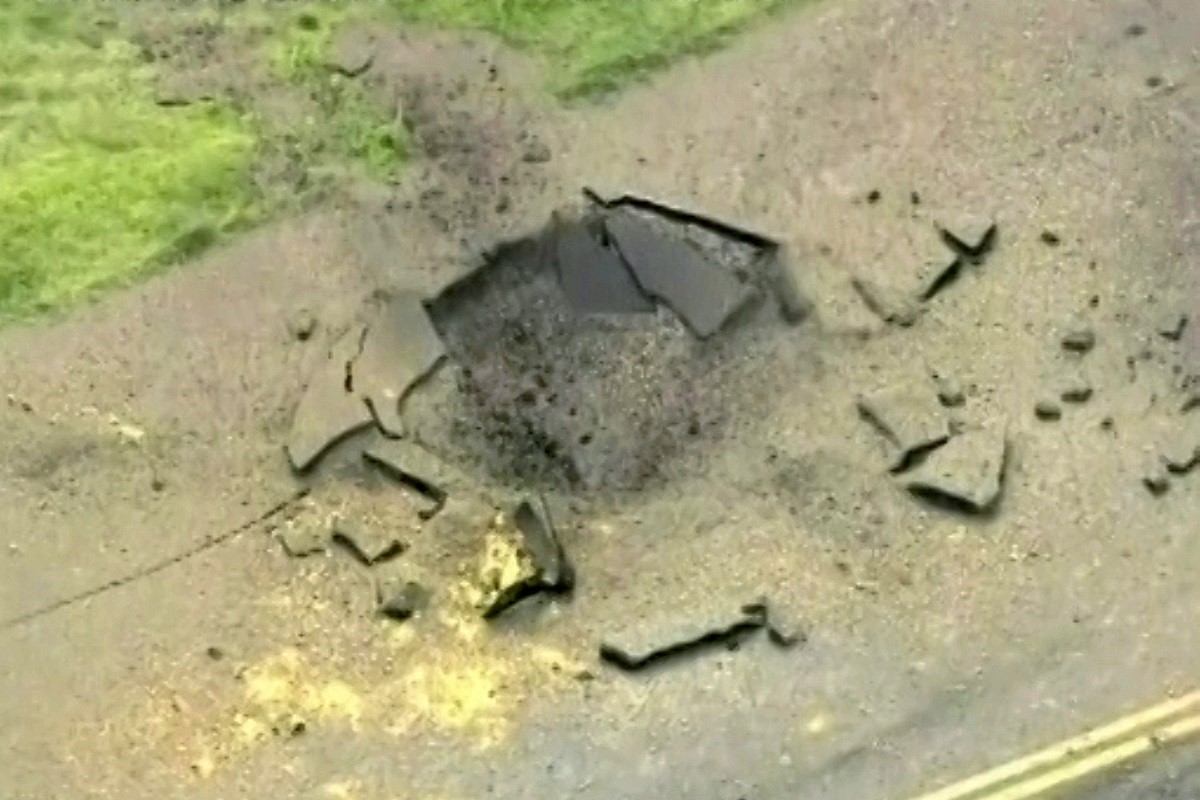
The hole caused by the explosion in the airport’s taxiway on Wednesday, in a still image taken from video provided by the Miyazaki prefectural government
The airport resumed its operations Wednesday night after the Land, Infrastructure, Transport and Tourism Ministry backfilled the hole. This is believed to be the first time that a dud ordnance has exploded on an airport taxiway or runway, the ministry said.
According to the ministry’s office at the airport and other sources, the explosion took place more than 1 kilometer east of the passenger terminal building, causing a hole in the taxiway about 7 meters long, 4 meters wide and 1 meter deep. The hole was located near the shoulder of the taxiway, which aircraft wheels do not touch but wings can pass above.
The ordnance was believed to have been buried within 1 meter of the surface. Metal fragments and other objects scattered over a radius of about 200 meters. About two minutes before the blast, the JAL plane bound for Haneda had been moving on the taxiway.
The Ground Self-Defense Force’s dud ordnance team removed the remaining part of the exploded shell by about 3:10 p.m. on the same day. According to the GSDF, the bomb was a 250-kilogram U.S. military explosive.
When airport facilities are built, a search for dud ordnances must be conducted in advance. “We believe that an underground survey has been conducted, so it is unlikely there are other unexploded bombs,” the head of the airport office said at a press conference on Wednesday.
“Considering the balance between convenience [and safety], we will resume operations as soon as the collection of flying debris and backfilling [of the hole] are completed,” he said.
According to airport sources, work to widen the S6 taxiway was conducted during the Heisei era (1989-2019), and the explosion is believed to have occurred at the widened area. The ministry intends to check the records of unexploded ordnance searches in the past.
Miyazaki Airport was built in 1943 as an air base for the Imperial Japanese Navy, and became a civilian airport after the war. According to the Miyazaki city government, out of 24 dud bombs that have been found in the city since 1956, five were discovered on the grounds of the airport.
Unexploded bombs have been found at airports in other prefectures. In April 2020, three 250-kilogram bombs, which are believed to have been dropped during the Battle of Okinawa were discovered near Runway 1 at Naha Airport in Naha.
In October 2012, an unexploded bomb was also found near a runway of Sendai Airport, which straddles in Iwanuma and Natori in Miyagi Prefecture.
"Society" POPULAR ARTICLE
-

M4.9 Earthquake Hits Tokyo, Neighboring Prefectures
-

M7.5 Earthquake Hits Northern Japan; Tsunami Waves Observed in Hokkaido, Aomori and Iwate Prefectures
-

Tsukiji Market Urges Tourists to Avoid Visiting in Year-End
-

Beloved Cat Stationmaster Nitama in Wakayama Pref. Passes Away at 15
-
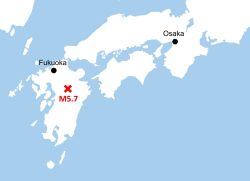
M5.7 Earthquake Hits Japan’s Kumamoto Pref., Measuring Upper 5 Intensity, No Tsunami Expected
JN ACCESS RANKING
-
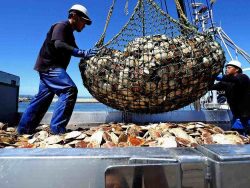
Japan’s Hopes for Seafood Exports Shot Down in China Spat
-

Keidanren Chairman Yoshinobu Tsutsui Visits Kashiwazaki-Kariwa Nuclear Power Plant; Inspects New Emergency Safety System
-

Japan to Charge Foreigners More for Residence Permits, Looking to Align with Western Countries
-

Imports of Rare Earths from China Facing Delays, May Be Caused by Deterioration of Japan-China Relations
-

Japan Exports Rise in October as Slump in U.S. Sales Eases


